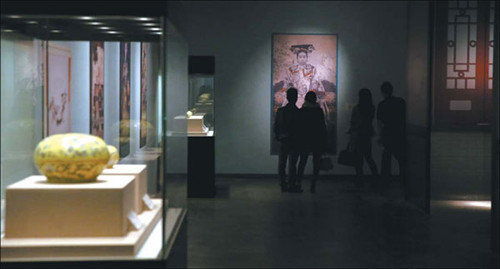
Ci Xi's China Exhibition held at Beijing's Capital Museum displays the Empress Dowager's good taste in her choice of porcelain. Photos by Jiang Dong / China Daily
Porcelain exhibitions are a dime a dozen in China, but this one is bound to interest even the most jaded of museum-goers. Zhao Xu previews the Empress Dowager's china collection.
For 47 years from 1861 and 1908, she ruled China. Her power was envied, and in the seemingly unshakable tradition of male rule, the Empress Dowager Ci Xi of the Qing Dynasty (1644-1911) was legendary, variously described as a combination of ambition, beauty and cold-blooded cunning.
She was loved and hated, having succeeded in seizing and holding onto power while the Qing Dynasty entered its twilight years amid social tumult and turbulence against a changing world.
The public fascination with Ci Xi had been fuelled by various accounts of what she was and how she lived, some more lurid fiction than proven fact. But there is one thing that is concrete and undeniable - the Empress had good taste.
This aesthetic appreciation is reflected in her choice of porcelain, for daily use in court, and now a collection that will be a testimony of her good taste.
A long-awaited exhibition at Beijing's Capital Museum is aiming to do just that. About 100 pieces now on show are all from the capital's Forbidden City Museum, the royal palace and seat of power in China between 1420 and 1912.
The collection starts not with Ci Xi, but with her son, the Emperor Tongzhi, whose birth in 1856 first placed the 22-year-old royal concubine on the competitive path to becoming the country's most powerful person.
A collection of bowls, spoons and teacups launches the exhibition, specially commissioned for the grand wedding of the young emperor in 1872. True to the occasion, coral red and imperial yellow are extensively used, while auspicious icons of bats and magpies adorn the collection. To the Chinese, the homophonic representations of these creatures are supposed to usher in harmony and good fortune.

Copyright ©1999-2011 Chinanews.com. All rights reserved.
Reproduction in whole or in part without permission is prohibited.